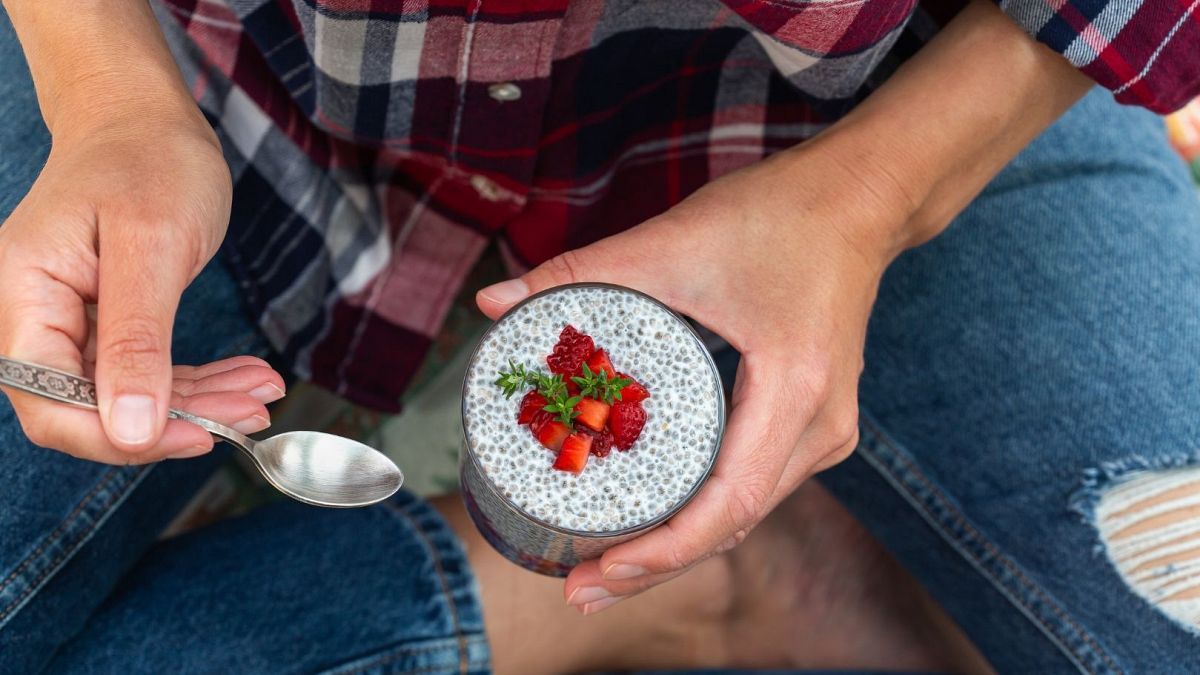ADVERTISEMENT
From McDonald’s migraine meals to papaya parasite cleanses, every other week there appears to be a new wellness trend emerging from social media platform TikTok. But this latest one might actually make sense: “fibremaxxing”.
As its name suggests, fibremaxxing refers to maximising the amount of fibre in your diet. It follows a long line of other online “maxxing” trends, including sleepmaxxing, flavormaxxing and the more sinister looksmaxxing – all of which recommend going to extremes to improve certain areas of your life.
Fibre’s surge in online popularity was sparked, in part, by a video from 25-year-old Tiktok creator Pamela Corral,** whose videos of high-fibre chia seed puddings regularly go viral.
“Fiber is super cool – I think more people should be eating fiber,” Corral said in an interview with the New York Times.
It’s music to many nutritionists’ ears, as for once this is a wellness trend that aligns with health messaging: people should indeed eat more fibre.
Found in fruits, vegetables, and whole grain foods, the recommended daily intake for fibre is 25 grams for women and 38 grams for men – although most adults only average about 20 grams, according to the United Kingdom’s National Health Service (NHS).
“It’s been well documented that eating a lot of fibre is associated with lower cholesterol, lower blood sugar, lower inflammation, [and] it protects against colon cancer,” Boushra Dalile, a postdoctoral researcher at KU Leuven who studies the link between nutrition and the gut microbiome, told Euronews Health.
“Also, in relation to heart health, [it contributes to the] reduction of cardiovascular disease risk, and, more recently … supporting brain development and behaviour”.
In 2019, a landmark study commissioned by the World Health Organization (WHO) found that an increase of fibre from 25 grams to 29 grams per day was associated with a 15 per cent to 30 per cent reduction in overall mortality and heart disease death.
“Most people struggle to reach the minimum [fibre] recommendations, so it’s really nice to see something trending that could at least help people reach this amount, and potentially even go beyond,” Dalile said.
Is fibremaxxing safe?
While increasing your fibre intake is mostly seen as a good thing, any “wellness” advice on the internet should still be taken with a grain (quite literally) of salt. Social media algorithms tend to favour extremes, but as always, moderation is key – along with lots of hydration.
“It’s really, really important to drink plenty of water when consuming high-fibre foods throughout the day,” said Dalile, adding that this helps to prevent gas and bloating.
People who don’t usually eat a lot of fibre should also be careful not to introduce it into their diet too quickly.
“You might actually feel pain and be constipated because all of a sudden, your system’s bombarded with a lot of things that it just doesn’t know how to digest”.
A major element of fibremaxxing’s appeal has been its sell as an easy fix for weight loss. Last year, one TikTok user shared a smoothie recipe captioned: “When you realize fiber can have effects similar to Ozempic so you drink this daily & you see more results in 2 weeks than you have in 2 years”.
While fibre can indeed help people lose weight by making them feel full for longer, it’s important to remember that most health advice online is anecdotal – and should not be taken in isolation.
“People who are committing to a healthy lifestyle usually don’t do so on just a single layer, which is diet, but also do that on the layer of sleep, the layer of exercise, the later of lowering their stress level or avoiding stressors where possible,” Dalile said.
How can you increase fibre intake?
Adding just seven grams of fibre has been found to help reduce the risk of cardiovascular disease by nine per cent, according to a report by the United States’ National Institutes of Health (NIH).
A high-fibre diet doesn’t have to be bland. Porridge oats, strawberries, avocados, whole-wheat pasta, and baked beans all fit the bill.
But if you still struggle to get your intake up, Dalile recommends adding one small fibre element to your days and then building up from there.
“One thing that’s easy is using lots of seeds in meals,” she said. “If you’re having a salad, just sprinkle some nuts and seeds on top of that and it’s a very easy way that doesn’t even require any extra cooking”.
Other convenient options include swapping white rice for quinoa or couscous, adding lentils to soups, and blending whole fruits – rather than juices – into smoothies.
Dalile said, however, that increasing fibre should be approached gradually and with a focus on variety.
“Don’t stick to just one type [of fibre] if you want to maximise its effects, because every fruit and vegetable contains different types of fibre that is taken up by the body in slightly different ways.”

